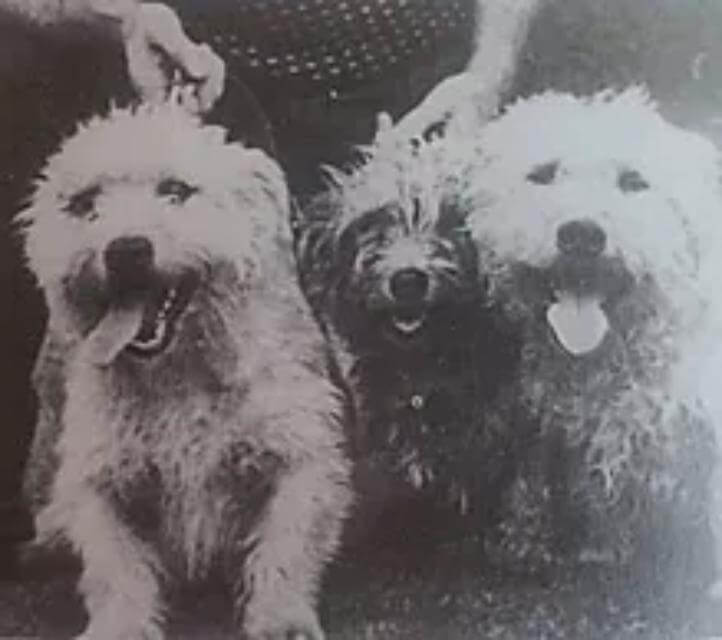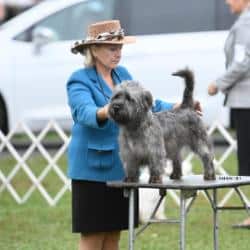
Home » The Glen of Imaal Terrier Then & Now
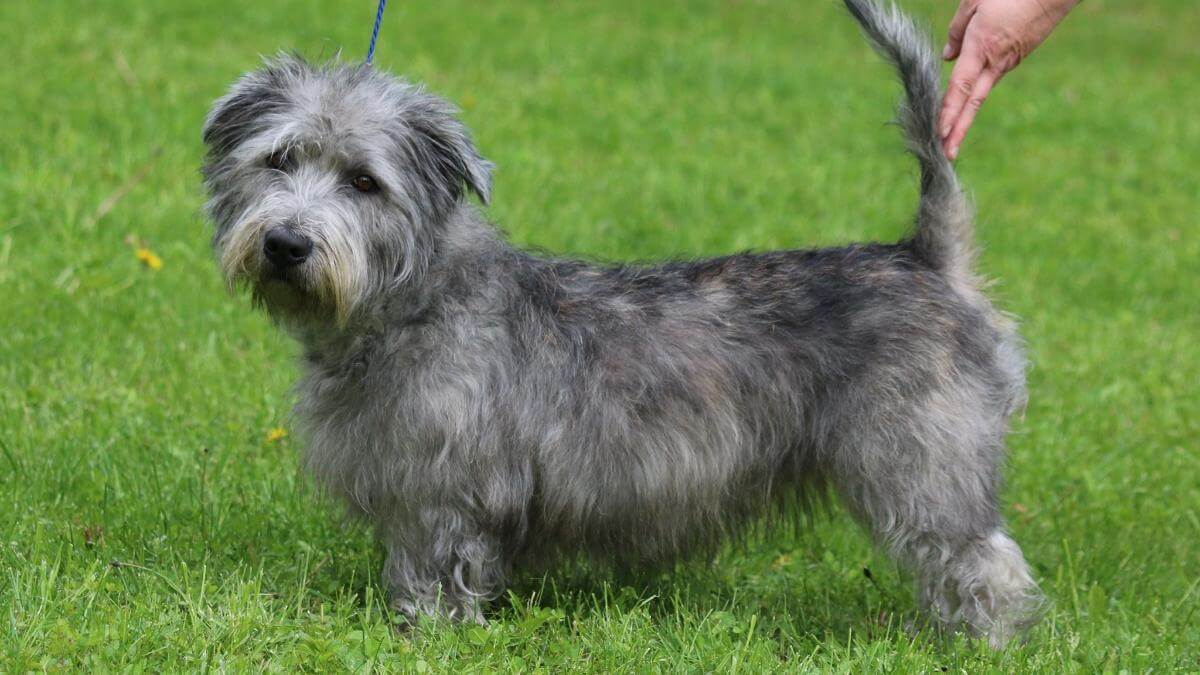
The Glen of Imaal Terrier originated in the remote mountains of County Wicklow, south of Dublin, Ireland. It is suggested that they rose from the influx of long and low hounds brought in by Flemish mercenaries in the 1500s, which then interbred with local terrier-type dogs. They became the farmer’s dog in this isolated region and were largely unknown until many years later. They also remained largely unchanged – or antique.
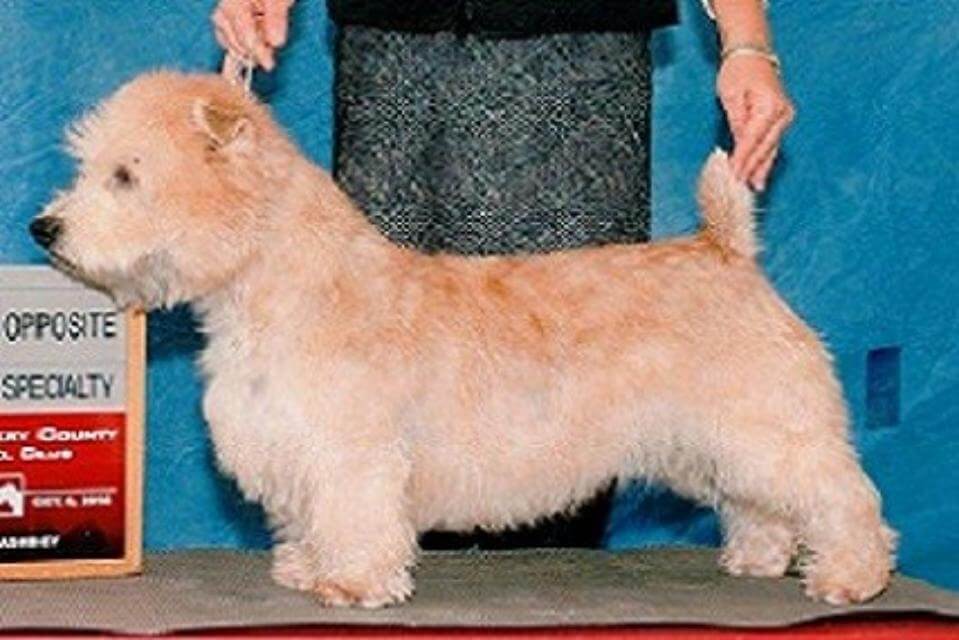
Antique features are the hallmark of the Glen of Imaal Terrier and the key to judging and preserving our breed. They are also the reason that it made such a good farm dog. These features include a large head, bowed forequarters with a slight turnout of pasterns, and a slight rise in topline from withers to tailset. They have stayed close to their achondroplastic roots without appearing dwarfy.
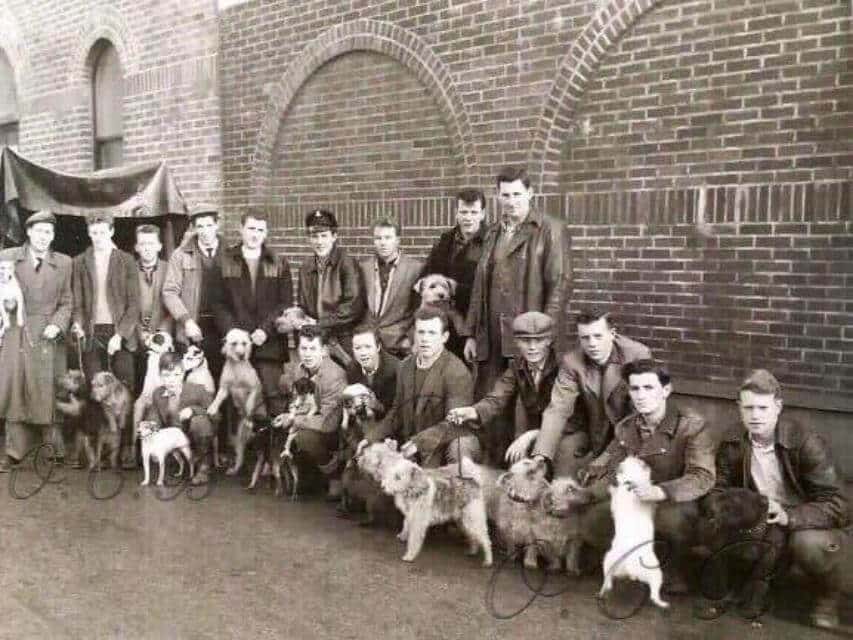
The terrain in the Glen of Imaal is rough and rocky. Glens had to have enough leg and stamina to climb, hunt, and dispatch vermin. But their shorter stature also made them ideal for entering badger setts, moving through the tunnels to locate, engage, and remove the badger from the den. The average tunnel is about 9 inches tall and 12 inches wide. Glens ideally range from 12-1/2 to 14 inches. If the legs are too short, the chest would drag and prevent the dog from navigating the tunnels.
Badger hunting is no longer legal in Ireland, but that does not mean that we should not preserve the characteristics of our breed that made it such an efficient hunter. Form follows function.
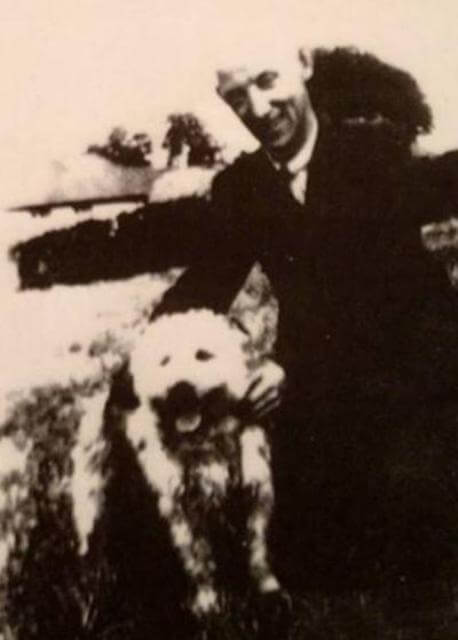
The Glen of Imaal Terrier Breed Standard was written in 1933 and the breed was recognized in Ireland in 1934. The FCI Standard has changed very little since that time. The AKC Standard fleshes out the original version and adds ideal proportions. Both versions describe a moderate dog that reflects its origins.
The original (1933) Standard describes front legs that are “rather short but of great bone.” Keep in mind that this description is in comparison to the other Irish terrier breeds – the Kerry Blue Terrier, Soft-Coated Wheaten Terrier, and Irish Terrier. It is not a stand-alone statement. The Irish Standard was later changed to remove “rather” from the verbiage and the AKC Standard reflects that move.
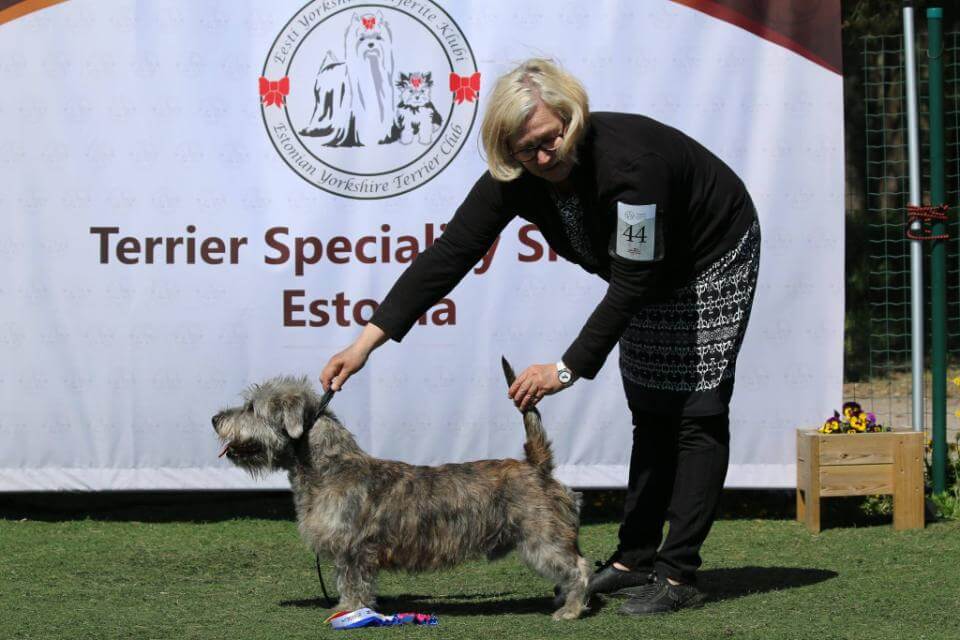
The topline is also unique. Most breeds desire a level topline. Many other dwarf breeds that started with moderate length of back and rising toplines have bred them to be long and level. Not the Glen.
The Glen of Imaal Terrier has a straight topline that rises slightly from the shoulders to the tail. The rise is due to the bowing of the front legs, so it should never be dramatic. A steep climb is most likely due to long hocks, a short upper arm, or too short forelegs.
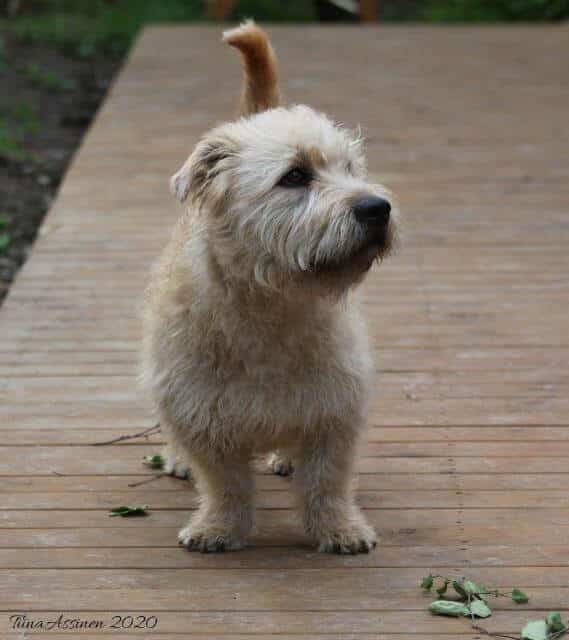
A recent Finnish study of over 50 Glens from ten different breeding programs demonstrated that extremes of bowing or turnout at the pasterns leads to limited range of motion and perceived pain. Judges should keep this in mind when evaluating the breed.
Glens are solid dogs. They have been described as concrete blocks with legs. The body of a Glen is long, yet back problems are largely unknown. The rib cage extends over much of the body, with the loin being relatively short. The back is extremely well-muscled and supports the spine with ease, helping them stay the athletes that they are.
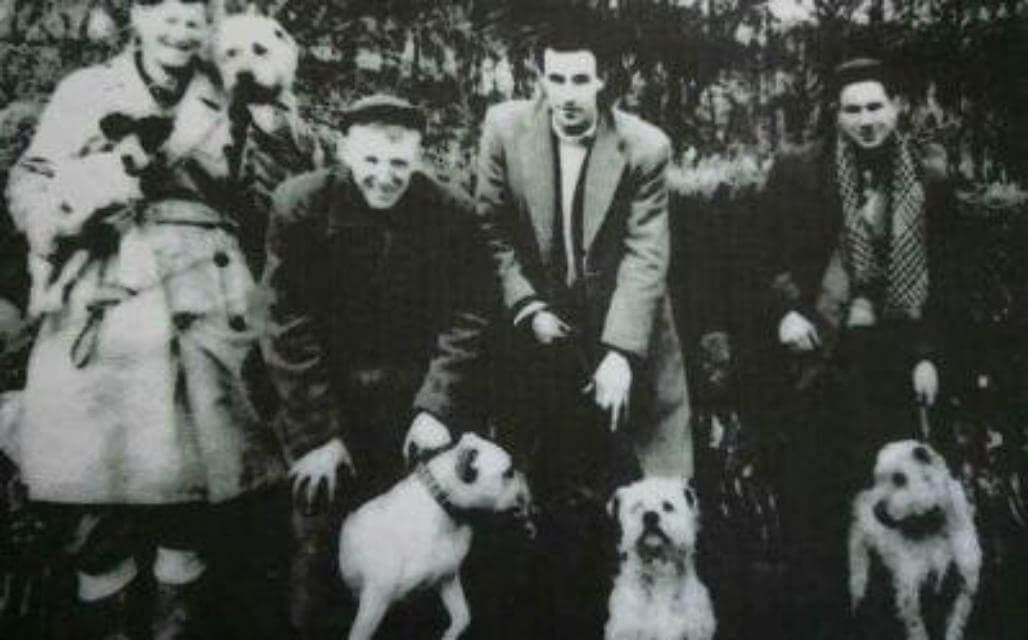
So, where is the breed now?
Over the past 30 years, the Glen has undergone many changes. Some good, some bad. Grooming has definitely gotten better! A “rough-and -ready working terrier” does not mean dirty, scruffy, or ugly. But “overtrimming” has gotten out of hand. Scissoring and sculpting are rampant and highly undesirable. And there have been a few dyed dogs.
There was a time when many oversized dogs were appearing in the ring, and a time when it was filled with dogs far shorter than the Standard dictates. We appear to be normalized now.
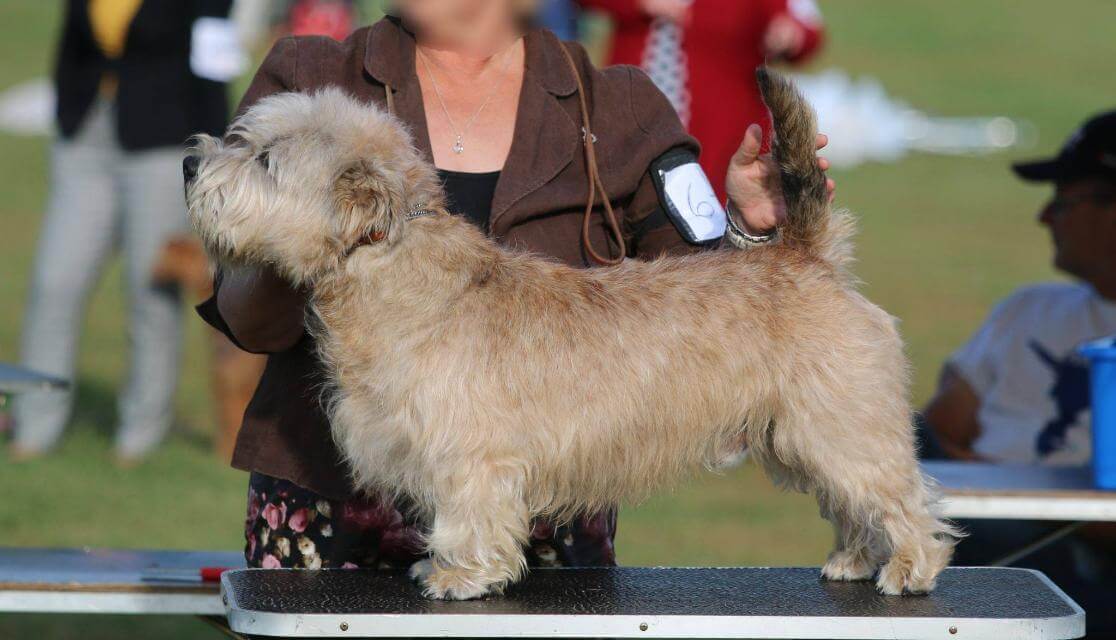
Bites have definitely improved! In the 1990s, it was difficult to find a dog with a perfect scissors bite. Now it is uncommon to see a wry mouth or undershot jaw.
Fronts and rears still need work. These are generic problems until you factor in the bowed front of a Glen. We have seen an influx of markedly short front legs with dramatic toplines. But we have also seen a positive change towards a more moderate turnout at the pasterns. Long hocks seem the norm in a breed that calls for short hocks. Observing a Glen coming and going reveals much. The front legs shouldn’t knit and the rear hocks should remain parallel.

The topline has fluctuated over the years. Roach-backed dogs rarely occur, but many still have a drop-off at the croup. Overly long backs have generally disappeared, but we are still dealing with extreme rises to the rear. A ball should never be able to easily roll from the tail to the shoulders.
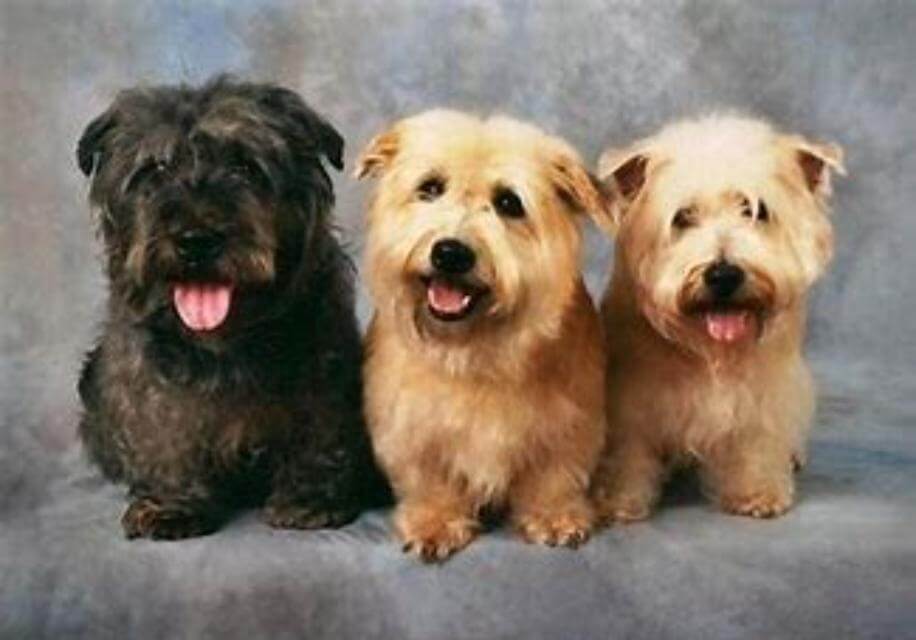
Overall, the breed is in good shape. The relative ease of obtaining dogs or their genetic material from overseas has allowed us to expand our US gene pool and prevent a bottleneck. We have made improvements in the health of our breed through testing and careful selection in our breeding programs, and demonstrated excellence in performance, the show ring, and the family home. All while striving to maintain the Antique Features of our breed.
